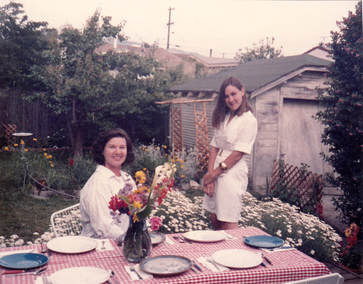 Sherrill & Simone, Spring 1988
Sherrill & Simone, Spring 1988 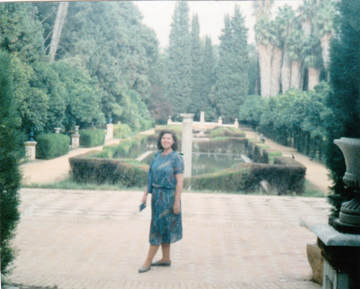 Sherrill in Seville Garden
Sherrill in Seville Garden In my memory, the huge Seville cathedral and ornate bell tower (originally the grandest of minarets for a long ago razed mosque) dominates the city, but I also remember lush green gardens and ripe oranges on the ground, exuding their sweet perfume as they rotted. Sherrill hit the jackpot here when it came to reliquaries, including one with a thorn from Jesus's crown, one with a piece of the True Cross, and another with one of St. Peter's ribs. I confess that I was more interested in the tomb just inside the cathedral door where Christopher Columbus's remains finally rested after boomeranging across the Atlantic several times—unless, as some people suspected, it was only his brother's bones.
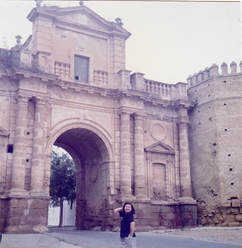 Sherrill posing at Cordoba's great gate
Sherrill posing at Cordoba's great gate
"If you loved me," Sherrill told me, "you'd buy me Spanish tiles and flowerpots."
"And carry them home for you."
"Of course."
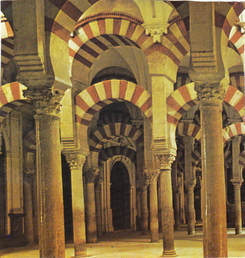 Interior, Great Mosque of Cordoba
Interior, Great Mosque of Cordoba "No!" Sherrill told the man, rolling up the side window.
Despite the sun half-blinding her through the wet mess, she turned onto the bridge. This gypsy wasn't going to intimidate her! When she reached the other side of the bridge, she found a place to park, I got out, and did the best I could to clean the windshield.
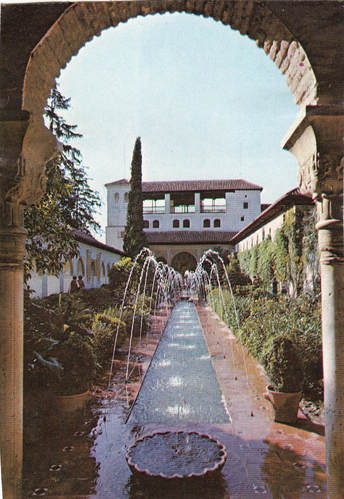 In the Alhambra Gardens
In the Alhambra Gardens In Granada, we weren't able to get a room at the parador inside the Alhambra, but—we told ourselves—it didn't matter because we'd be spending most of our time exploring that vast complex of buildings, gardens, fountains, and reflecting pools, anyway, not hanging out in the parador. More than anyplace else on this trip, Sherrill had wanted to see the Alhambra, its beautiful architecture, gardens, and courtyards. Perhaps the most beautiful of the many patios and courtyards we saw there was the Court of the Lions, a private retreat of Mohammad V in the fourteenth century. Small thin-tailed lizards darted across the tiles and walls as if they were directing our eyes to different features and details. Delicate calligraphic tracings, plaster reliefs, and mosaics of countless small tiles gave every room and space a surprisingly light and cool feeling, despite the heat of the day. I could see Sherrill returning to Berkeley, ripping out flower beds, and replacing them with tiled courtyards and reflecting pools. Fortunately, she also loved English-style gardens like the one she'd already made for us.
To be continued....
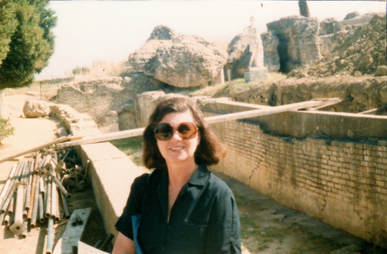
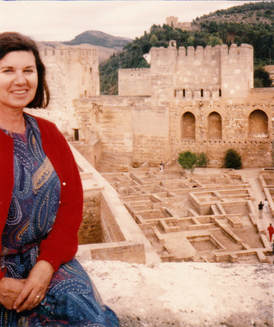
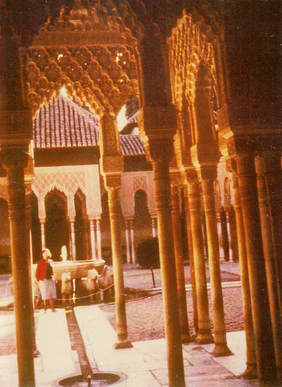
 RSS Feed
RSS Feed